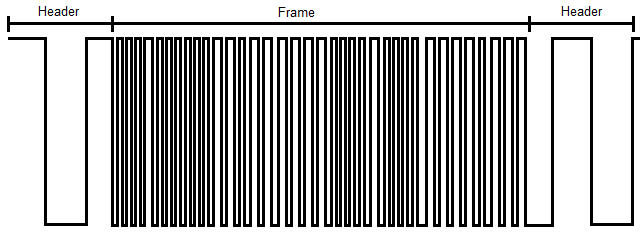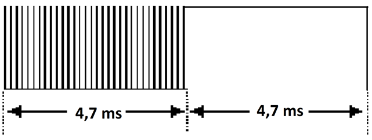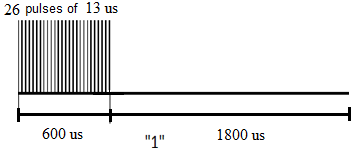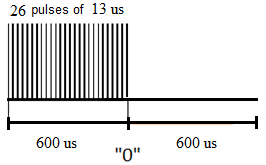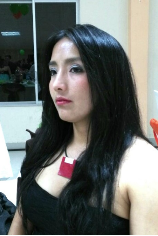1. INTRODUCTION
Although the automation of homes is a technology that has taken great strides, there is still no product aimed at people with some degree of physical disability.3
For a person without any physical limitation it is easy to perform daily activities such as: activating and deactivating loads, opening and closing curtains, controlling television and all types of devices controlled by infrared (IR) rays, this is not the case for people with motor disability or reduced mobility for whom the relief it would represent, including their families, the existence of a system that will help them overcome their limitations, would be very considerable.
In order to meet this objective and so that this group can achieve that autonomy so longed for, this paper describes the way to manage devices within your home using only voice commands, proving that our system is reliable, easy installation and simple operation.
This system is designed so that both people with normal abilities and the person with special abilities can operate all existing devices in the home, so that any failure in the system controlled by voice, does not interfere with the normal operation used for the rest of the household members.
After performing a search on products related to home automation control using voice commands, the only existing system as a commercial product is called SpeakHome (Alhena, 2012), which has been developed by the company Alhena engineering together with the company Nuance, a multinational manufacturer of voice recognition products, however, when you try to enter this website, there are no demonstration’ videos or manuals that allow you to observe the real capabilities of this system, information about software license costs, so there are doubts about the existence or actual availability of said system.
On the other hand, the following patents related to systems commanded by voice, do not have associated commercial products: patent EP2863586A1 (OH, 2014) has a network of microphones, each of these carries the voice signal coming from the user to its respective recognition circuit voice. Although in this case the user can be located anywhere in the building and does not need to carry a microphone, voice recognition systems using chips are not very reliable, since it depends on the distance between the user and the microphone and, because having previous training also depends on the age of the user (child, adolescent, adult, older adult) and gender (male or female).
In our case, since the system is oriented to a home in which there is a person with a disability, it can be located anywhere at home, since it is wearing a wireless microphone, therefore, the network of microphones no longer it is necessary. The rest of people with normal abilities can command all the devices manually. The two systems: the one of manual control and the one controlled by voice commands, coexist without any problem.
In patent WO 2004/084114 A1 (DOMENECH, 2004) the computer is connected via internet to the control unit and the controlled household devices are connected to each other through an Ethernet network, forming a domestic network. In addition, this project has a user interface that shows the status of each of devices that make up the system. In our case, the voice commands issued by the user are transmitted to a controller technology device Power Line Communication X10, this device is connected to the power grid easily; the system does not depend on internet connection. It is important to emphasize that no additional wiring installation is required, or any additional control card or device, thus reducing the complexity of the system and easily allowing the system to be scalable.
In WO 03/001839 A1 (LEE, 2003) there is a remote control, which includes: a user interface unit, which receives a control signal; wired and wireless transmission / reception units for the transmission of the control signal from the user interface to the corresponding unit; and to receive the status signals of the corresponding devices, there is a central processor. In addition, the processor allows: control of the user interface, storage data and work with the display unit. The user interface shows: a menu for controlling the loads, the current status of the controlled devices and whether new devices have been added or deleted from the system. The user selects on the display screen the particular apparatus to be controlled and performs all the required control actions. In our case, we also have a user interface that is responsible for performing the following tasks: receiving and interpreting the voice commands issued by the user, and transmitting them to an X10 technology controller device, which is connected to the electrical network. This device causes the orders issued by the user to be transformed into digital signals that travel through the existing electrical network in the house. In this way, the issued commands reach an X10 receiver device, which is connected to the electrical network and to the device that the user wishes to control. The transmission / reception of the control signals by the electrical network is more reliable than the transmission / reception by wireless technology.
In the patent EP2863586 A1 (OH, 2014), the monitoring system includes multiple voice sensors, each of which incorporates a speech recognition circuit, each sensor can be installed in a different room to collect the voice commands of the users and send the control signal to the main controller of the process. The main controller in turn can communicate with several control subsystems scattered throughout the building.
In response to the recognition of a verbal command, a coded representation is transmitted to an apparatus of the system, upon receipt of the signal, the control apparatus carries out the requested command or provides the requested information.
The control devices have wireless technology to communicate
with the set of sensors. In our system, the person with physical disability or reduced mobility issues voice commands through a microphone, using commercial voice recognition software, and therefore achieves a very high level of reliability, even in an environment of considerable noise impossible to be achieved through hardware-based systems (voice recognition chips). The voice commands issued by the user are received and interpreted and transmitted to a Power Line Communication (X10) technology controller connected to the electricity network. This device causes the commands issued by the user to be transformed into digital signals that travel through the network. This is a means of reducing the complexity of the installation of the system.
After this review of the state of the art and taking advantage of the current development of technology, it is determined that this system does contribute greatly to the needs of people with motor disabilities since it allows them to be self-sufficient in the following activities:
- To move using an automatic wheelchair.
- To command several electrical devices in the home.
- To be able to inset in the work environment taking advantage of the potentialities of computer applications.
2. METHOD AND PROCEDURE
According to Figure 1, this system comprises:
2.1 Voice recognition system
The person with physical disability or reduced mobility issues voice commands through a microphone [Figure 1. 1a]. These orders arrive at the following destinations:
a) To the computer of the wheelchair [Figure 1. 1c] that is of very small dimensions and which is responsible for controlling its movements in all directions: forward, backward, turn to the right, turn to the left and stop. This communication is done in a wireframe way.
b) To the home computer [Figure 1. 1b] that is responsible of controlling all the electronic devices inside it, that is, it carries out the home automation control: lights, curtains, heater, fan, sound equipment, TV, etc. This communication is done wirelessly.
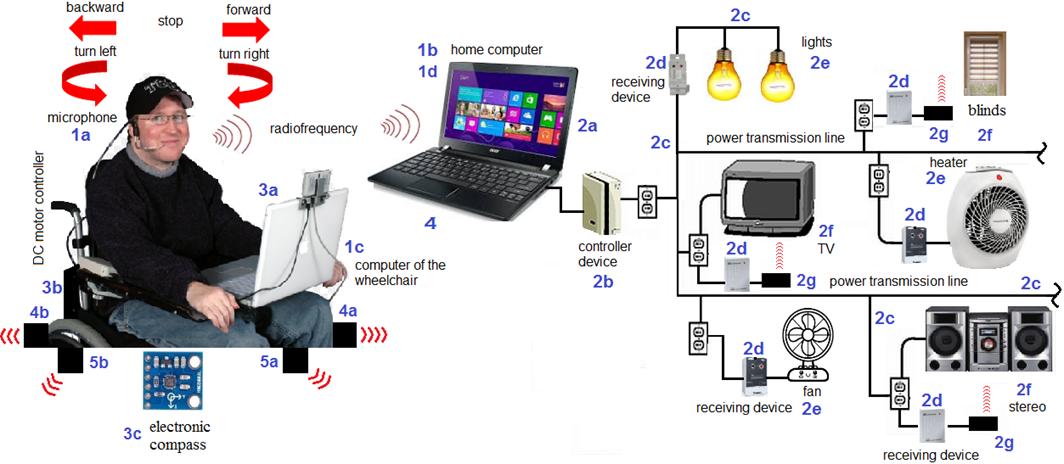
Figure 1. Control system architecture through voice commands aimed at people with physical disabilities or reduced mobility that allows you to move in your wheelchair, control household devices and also computer programs.
In the speech recognition part, our system employs speech recognition software [Figure 1. 1d], the same one is installed both in the computer of the wheelchair [Figure 1. 1c]; as well as, in the computer located in the home [Figure 1. 1b].
2.2 Transmission of voice commands to control the movement of the wheelchair.
In the computer of the wheelchair [Figure 1. 1c], to control the movement of this, we have a program made in a visual environment [Figure 1. 3a] that is responsible for receiving the commands issued by the user through the wired microphone [Figure 1. 1a]; and, through the serial port of the computer, a DC motor controller is connected and operated [Figure 1. 3b], which is in charge of controlling the two motors of said electric wheelchair. In this way, depending on the drive of one or other of these engines, the user can move in any direction: forward, backward, left, right, make turns at a certain angle, control the speed of travel and stop.
Additionally, when the user goes in his wheelchair from one point to another, due to many factors such as the difference in the degree of friction in the wheels, he suffers a deviation that must be constantly compensated by the user.
To avoid this problem, a method was developed to linearize the trajectory of this movement and that is based on an electronic compass [Figure 1. 3c] whose data feed the program that drives the DC motor controller [Figure 1. 3b]. Thus, the straight line travel from one place to another is completely guaranteed.
To define the model of the robot are considered linear (1) and angular speeds (2), of the mobile robot that are replaced in (3), (4) and (5).
Where V1 and V2, are the speeds of the wheels, R is the radius of the wheel and L is the distance between the wheels.
Additionally, a rotation matrix is proposed (Eq. 6, 7) for when the user's voice command is to rotate a certain angle.
To obtain the matrix (8) that determines the direct kinematic model of the differential robot (wheelchair), the rotation and velocity matrices obtained are multiplied and based on this model, the chair's movement control system is performed.
With the model obtained for the wheelchair works in Matlab for the calculation of the proportional, derivative and integral constants, with these values we work in the programming of the DC motor controller in closed loop. For the feedback the electronic compass is used that reads every time the value of the measured angle that is expressed in x and y coordinates, with the reference angle that depends on the rotation desired by the user it is possible to determine the error and perform the respective control.
Finally, the four distance sensors solve the problem of safety in the movement of the user in his motorized chair [Figure 1. 4a, 4b, 5a and 5b]. These are ultrasonic sensors that work at a frequency of 42 KHz, which integrate the receiver and transmitter into a single transducer and have a measuring range from 0 to 6 meters. The reading of the distance data can be acquired by PWM, analog or serial output.
2.3 Transmision / reception of voice commands for the control of loads with the home (Domotic System)
In the home computer [Figure 1. 1b], which is responsible for home automation control, there is another program performed in a visual environment [Figure 1. 2a] that is responsible for performing the following tasks: receiving and interpreting the voice commands issued by the user and transmitting them to a controlling device [Figure 1. 2b] of Power Line Communication technology (X10) that is connected to the electric network [Figure 1. 2c]. This device causes the orders issued by user to be transformed into digital signals that travel through the existing electrical network in house. In this way, the orders issued reach an X10 receiver device [Figure 1. 2d] that is connected to the electricity network and will allow the control of an on / off device [Figure 1. 2e], for example, a luminaire, a heater, a fan, etc.
In the case of artifacts controlled by infrared (IR) signals [Figure 1. 2f]: TV, sound equipment, blinds, air conditioning, etc., an X10 to IR converter module is used [Figure 1. 2g] that receives the X10 commands and translates them to IR code. This converter module X10 to IR, for the case of 110 Volts of alternating current, is designed and built exclusively to fit the requirements of this invention. To fulfill this objective, a module is required that allows not only transmit but receive an X10 frame, so it uses a bidirectional module that connects to the electrical network. Once the order X10 has been received, it must be converted to IR, but first we must know what the IR order consists of. Each manufacturer uses different IR codes in their electronic devices, for example, Philips, developed the protocol RC5, RC6 and REC80 at a carrier frequency of 36 KHz; while Sony uses bit-width encoding, which consists of modulating an infrared signal of 40 KHz. In order to address this problem, regardless of the manufacturer, we capture the IR order by means of an IR receiver diode and visualize it on an oscilloscope, (the oscilloscope is used only for design the module X10 to IR ). This is done for each of the commands of each of the IR devices. Subsequently, this process was automated through a system based on microcontroller.
The captured information (sequence of ones and zeros logical and their times) is implemented in a microcontroller and in this way any remote control corresponding to a determined IR device, can already be replaced by our IR module. The diagram of the module that transforms the signal X10 to IR [Figure 1.2g], is shown in Figure 2.
To indicate how to generate the signals in the microprocessor, we will work with the coding to turn off the LG sound equipment (Figure 3), this signal is formed by the header and the frame.
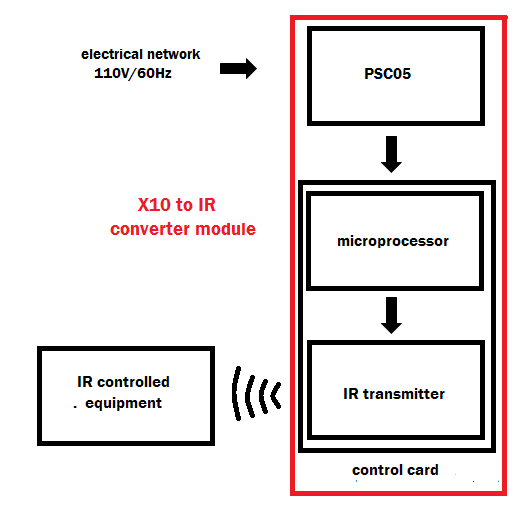
Figure 2. Diagram of the X10 to IR converter module (2g) that receives X10 commands and translates them into IR code. This converter module does not exist in the market, so it was designed and built by us exclusively for this project.
First, the times of the header are analyzed in an oscilloscope and it is determined that the times in low must be generated by a burst of pulses with a period of 13 μs, this because each pulse has a frequency of 38 KHz. (Figure 4), while the high time is a single 4.7 ms pulse.
Now the IR frame is constructed (Figure 4), for which it is determined that the difference between a one and a zero is the time in low. A "1" is encoded as 600us of "pulses" and 1800us in low (Figure 5), whereas a "0" is encoded as 600us of "silence" and 600us of pulses (Figure 6).
To use this module in the home automation control, each of the orders of each of the devices has an assigned address and depending on this, the corresponding IR order must be issued, for example:
If address code = 1 and function code = on; Turn on TV
If address code = 1 and function code = off; Turn off TV
If address code = 2 and function code = on; Volume TV
If address code = 2 and function code = off; Channel TV
Etc....
2.4 Transmission of voice commands for the management of computer programs.
Using a speech recognition software [Figure 1. 1d], it is possible to control several of the programs installed in the home computer [Figure 1. 1b] and use them to generate text documents, surf the Internet, make phone calls, etc. These capacities make a very high probability of labor insertion of the person with motor disability or reduced mobility.
The voice commands for this part of home automation control can be: turn on / off luminaires, activate / deactivate electrical loads (heaters, fans, etc.), open / close doors. In the case of IR devices [Figure 1. 2f], for example the TV, the phrases pronounced by the user correspond to the actions that are carried out, adding their location since there may be several devices of these in several places of the home, for example: "turn on/off the TV of bedroom "," raise/lower volume of the bedroom television "," raise/lower channel of the bedroom TV ", etc. In the same way, it will happen for IR devices such as: sound equipment, curtains, blinds, air conditioning, etc.).
It is important to emphasize that no additional wiring installation or any additional control card or device is required for the implementation and operation of the system.
3. RESULTS AND DISCUSSION
3.1 Results
- The wireless microphone used has a range of 35 meters indoors, within this range the voice recognition does not present any problem, but for longer distances the recognition is degraded.
- With respect to speech recognition, orders with different noise levels are issued, which can originate from the TV, sound equipment or conversations of family members, indoors, or any source of street noise for the case of outside. All the tests were successful, even in the face of high noise levels produced on the street, this depends largely on the placement of the microphone and the degree of training of speech recognition software that even allows introducing additional error correction for particularly words suited to our needs. The wireless microphone used has a range of 35 meters indoors, within this range speech recognition does not present any problem, but for greater distances the recognition is degraded.
- For the transmission of the X10 signal, since the X10 controller and X10 receiver are connected in the same phase, signal level is high and the code that is transmitted is more than enough for the system to operate reliably.
- The performance of the X10 to IR converter, if line of sight is guaranteed between the transmitter and receiver, is satisfactory and does not give any problem.
The final project has reached the following characteristics:
- Independence of third people: Since everything is controlled only by voice commands, the present system represents a solution to overcome the limitations of a person with motor disability or reduced mobility, obtaining a high degree of independence from third parties and a very high probability of employment. Consequently, all this will bring relief and support for family members or people who assist him.
- Versatility: This system is designed so that manual control and voice control coexist and are independent. In this way, any failure in the voice-controlled system does not interfere with normal operation.
- Invention and innovation: This project is innovative for the following reasons:
-
Because it allows you to perform all tasks within the home using only voice commands.
For devices operated by infrared (IR) rays, such as a TV, the change is made from protocol X10 to IR through a module designed and built in this project, since these have not yet been developed commercially. The IR codes corresponding to a specific IR device, whatever it may be, are extracted by means of a visualization procedure in an oscilloscope. In this way, once all the necessary codes have been extracted, any command of said device can be executed (for example: turn it on / off, increase / decrease its volume, change the channel, etc.), using voice commands.
Although in the market there are automated electric wheelchairs (controlled by joysticks), this project is the only one capable of controlling the movement of the electric wheelchair, only with verbal commands from the user.
The system has a method to linearize the movement of the wheelchair, so that the user goes from one point to another without deviating. The developed method, nonexistent in products associated with automatic chairs, is based on the operation of an electronic compass that allows knowing and maintaining the desired orientation.
- Reliability: For voice recognition, the system uses commercial software that requires prior training and therefore achieves a very high level of reliability, even in environments of considerable noise.
- Ease of implementation and economy: Since the voice commands issued by the user travel through the existing electrical network in the house, no additional installation of wiring is required and therefore its implementation is reduced to the installation of software and the connection of X10 technology equipment whose cost is reduced and as commercial equipment is minimized any possibility of failure, common situation in the design and implementation of own hardware. It is estimated that, for a family house of four members, the investment is: $ 3000 broken down as follows: Wheelchair ($ 1000), motor controller ($ 400), 2 computers ($ 1000), X10 modules ($ 600).
3.2 Discussion
In the market there are some domotic management systems that can be classified into two groups: those that allow domotic control through keyboards (from a keypad, a cell phone, an iPad, etc.) and those that do it through transmission /reception of voice commands. These systems can be installed in certain areas of an environment such as: rooms or specific areas of a building, offices, hotels, etc., with what is intended to automate the creation of scenes of lighting, air conditioning, ventilation, security, etc. In general, these domotic systems commanded by voice do not require the use of a wireless microphone, which can initially be considered as an advantage; however, they are used only in small environments. For the case of using them in large environments, for example a whole house or a building, a network of microphones is required, which complicates the installation of the system terribly.
Additionally, these speech recognition systems are based on speech recognition chips, which may also seem to be an advantage since they do not require prior training that allows adaptation of the voice characteristics of the user; However, this characteristic operates negatively because its reliability is drastically reduced by depending on the age of the user (child, adolescent, adult, older adult) and gender (male or female). Another disadvantage is that, due to the lack of previous training, these systems have an acceptable degree of reliability only in environments with a very low noise level, that is, if we have, for example, conversations or background music, their degree of Reliability is reduced considerably making them inappropriate for applications aimed at people with disabilities since in these cases high reliability is required.
Finally, since the purpose of these commercial systems is to facilitate the lives of people or even claim to be luxury items, none is intended to facilitate the lives of people with motor disabilities or reduced mobility, for example, if a user with these characteristics go out in the wheelchair, both for its mobility and the amount of external noise, it would be impossible for one of the aforementioned systems to be adapted to these requirements.
In our case, since the system is oriented to a house in which there is a person with physical disability, it can be located anywhere at home, since it is wearing a wireless microphone, and, therefore, the idea of the network of microphones is no longer necessary, so the complexity of the system and its installation is very simple. Additionally, when using a software-based speech recognition system that requires about 40 minutes of training, according to the tests performed, its reliability is very high, even in a very high noise environment such as that on the street. The rest of people with normal abilities can command all the devices manually and the two systems (manual control and control by voice commands), coexist without any problem.
Another great advantage of this project is that the voice commands issued by the user travel through the pre-existing electrical network in the house, so no additional wiring installation is required, which translates into ease of installation and reduction of costs.
4. CONCLUSION
The developed project is a technological alternative to improve the quality of life of disabled people since through voice commands the user can perform daily activities at home and manage the computer.
By using speech recognition software increases the accuracy and effectiveness in the performance of this task, and being an essential part of the system ensures excellent control of all household appliances. While software weakness is that it is unipersonal, in return there are great advantages such as: unlimited word recognition, vocabulary correction, and great accuracy in recognition.
A great advantage of the system is that the user should not be next to the computer to issue the orders, that is, user can control the devices from anywhere in his house, regardless of the obstacles (walls, doors, etc.) thanks to the fact that Wireless audio system works on a range frequency of 614 MHz – 662 MHz.
A system was obtained in which both manual control, which serves members with normal abilities, coexist, and control by voice commands, which serves the person with disability in the four members. Having manual control is very important since, in case of any failure in the voice control system, the possibility of manual control is not lost.
The converter module from X10 to IR allows to control the television, sound equipment, curtains and any equipment handled by infrared: it is only required that the microcontroller reads the X10 frame and converts to an IR frame that will be transmitted to the corresponding IR commands.
With the speech recognition tests it is determined that the indoor range is approximately 35 meters, within this range the speech recognition does not present any problem. With respect to noise immunity, recognition is not affected by high noise levels, with high performance.
The system has almost reached a level of finished product that will be made available to people with motor disabilities and reduced mobility, as soon as financial resources are obtained to implement it in a massive way.
The people who will benefit from this project are not only people with motor disabilities and reduced mobility but also provide relief and support to their relatives or people who assist them.













